
A conscious travel guide to Lisbon


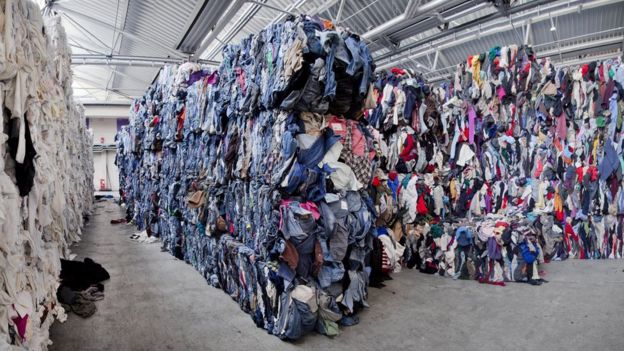
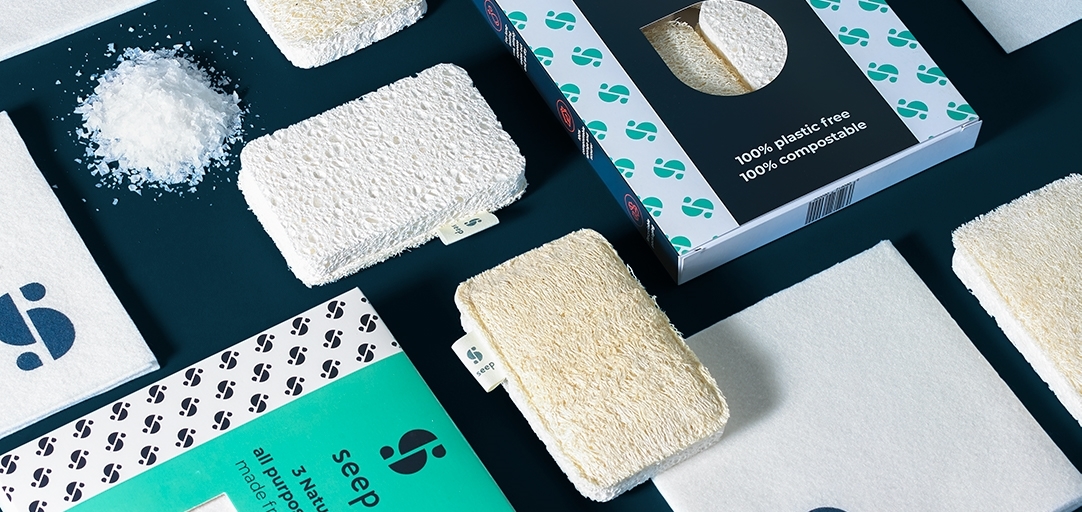
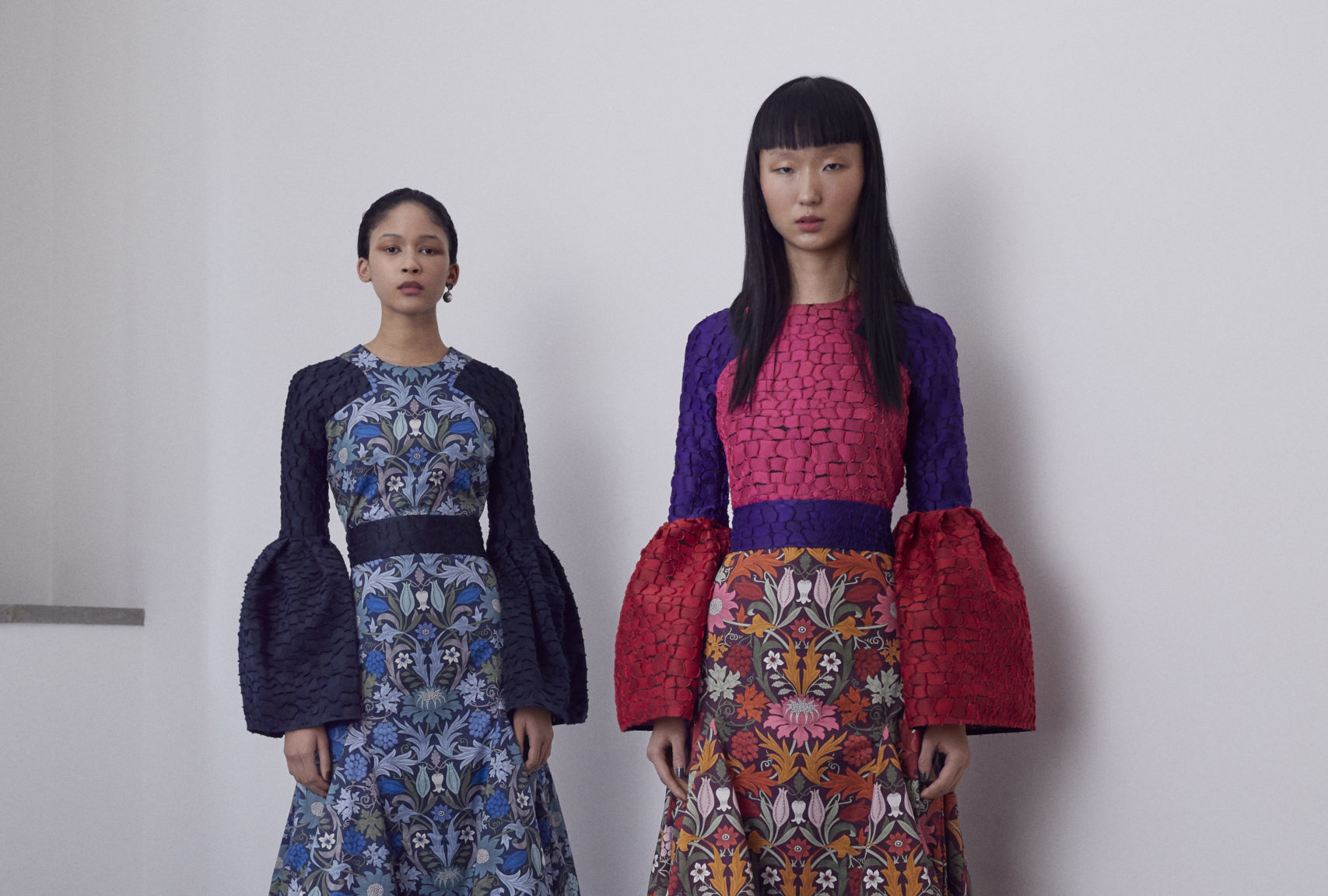
“We were starting to question the fashion system’s rigidness over seasonality,” explains Teatum over Zoom. “When you look at the face value of a material, it’s crazy to think that the value of that material is attached to a six month window, and once it’s outside of that window, you don’t like it anymore. It’s bonkers.” Until then, the pair had succumbed to the industry’s fervent demand for constant newness. They’d develop a range of new fabrics each season, many of which would never make it to the show or shop floor. “We’d have rolls of fabrics that we spent weeks developing and they were beautiful, but for whatever reason they weren’t right for the runway,” says Teatum. “We kept it all, but it was becoming a problem where we had these beautiful things, they’re just hiding away, but we’re creating new stuff,” agrees Jones. “When you start to open your eyes to what you have, you think: these are as beautiful as the other pieces, they just need a moment.”
Their second ReLove collection is made using 12 of Liberty’s deadstock archive fabrics that were deemed imperfect, and donations of unsold denim from Save The Children. These were fused with the brand’s own unused textiles to recreate a selection of Teatum Jones’ best-selling styles. But why not design a new collection around these fabrics? “We have an ethos: don’t throw away good design,” says Teatum. “For the first few years, we went hell for leather on designing collections because we were new and we fell prey to the buyers who were asking: what about newness? But we got to the point where we thought, this dress is amazing, it’s been amazing for the last four seasons. Why are we not working with it further?”
The brand has always taken inspiration from human stories, so it was an emotional connection to the communities they researched that pushed the brand to go seasonless. “We put a lot of development into our collections – one collection we looked into disability and we were getting to know a community, then suddenly February was around the corner and fashion week was telling you to put it on the catwalk and say goodbye to it,” says Jones.
Now, the brand drops collections that sit within a wider, ongoing exploration of a theme. “It’s about paying homage to the subjects we’re researching, but also doing the same thing to materials that come from that research,” says Teatum. “Because so much goes into developing the collections, there’s lots of emotional narrative that’s wrapped up in the design process, so we were paying respect to all of that.”
Slowing down their business and developing the ReLove initiative has also revived the team’s passion for the craft, says Jones. “It’s taken us back to our love of why we joined fashion when we first started,” he says. “Even compared to our college days, we’re much more hands on – we’re pulling out these fabrics, quilting and patchworking. It’s exciting, finding that love again. We’ve had the space and time to really focus on fashion as opposed to the treadmill [of the industry].”
Working solely with unused or unwanted textiles hasn’t been without obstacles, but the duo have never been ones to shy away from a challenge. “I think it forces you to be more creative,” says Teatum. “But it depends which way you look at it and what kind of person you are. You can look at it as [creatively] limiting, because there are limitations to dealing with small lengths of fabric and what you can do with them. Or you’re people like us who think: how can we make this even better than it was four seasons ago?”
If ever a brand could have been ready for the pandemic, it was Teatum Jones. Having already stepped back from the system, slowed production down and focused on seasonless design, their model was one that other brands were forced to adopt when COVID hit. “Everything shifted, and suddenly the idea of ‘we can’t change this system, it’s too big’ had to change,” says Jones. “There are designers who have been talking about what needed to change, but the pandemic forced everyone to stop and think about how we can do it in a better way. We thought it could be done before it was forced to, now I just hope the changes carry on and we push through with them instead of falling back into old thinking.”
As many brands grapple with how to rework unsold stock and design around the rolls of unused textiles sitting in their warehouses, Teatum and Jones hope that ReLove can act as a use case to prove that beautiful clothing can come from old or unwanted textiles. The key to success, they believe, is in collaboration. “When you partner with other brands, you introduce scalability, which is the one question that keeps getting thrown at us,” says Teatum. “It’s one way of answering that question, by bringing in partners like Liberty and Save the Children. You can do this on an industry-wide level, but it’s about partnering with multiple players who can bring awareness to the initiative.”
As for the future of the ReLove initiative, the pair are already in conversation with new collaborators to continue expanding their impact through creatively transforming waste textiles into timeless handcrafted collections. “ReLove depends on partnering with people who have the same belief in the concept, who can authentically work with us to create something beautiful that will sell,” says Teatum. “The more people you work with, the louder it gets, and the more that other designers and retailers realise that it’s possible.”
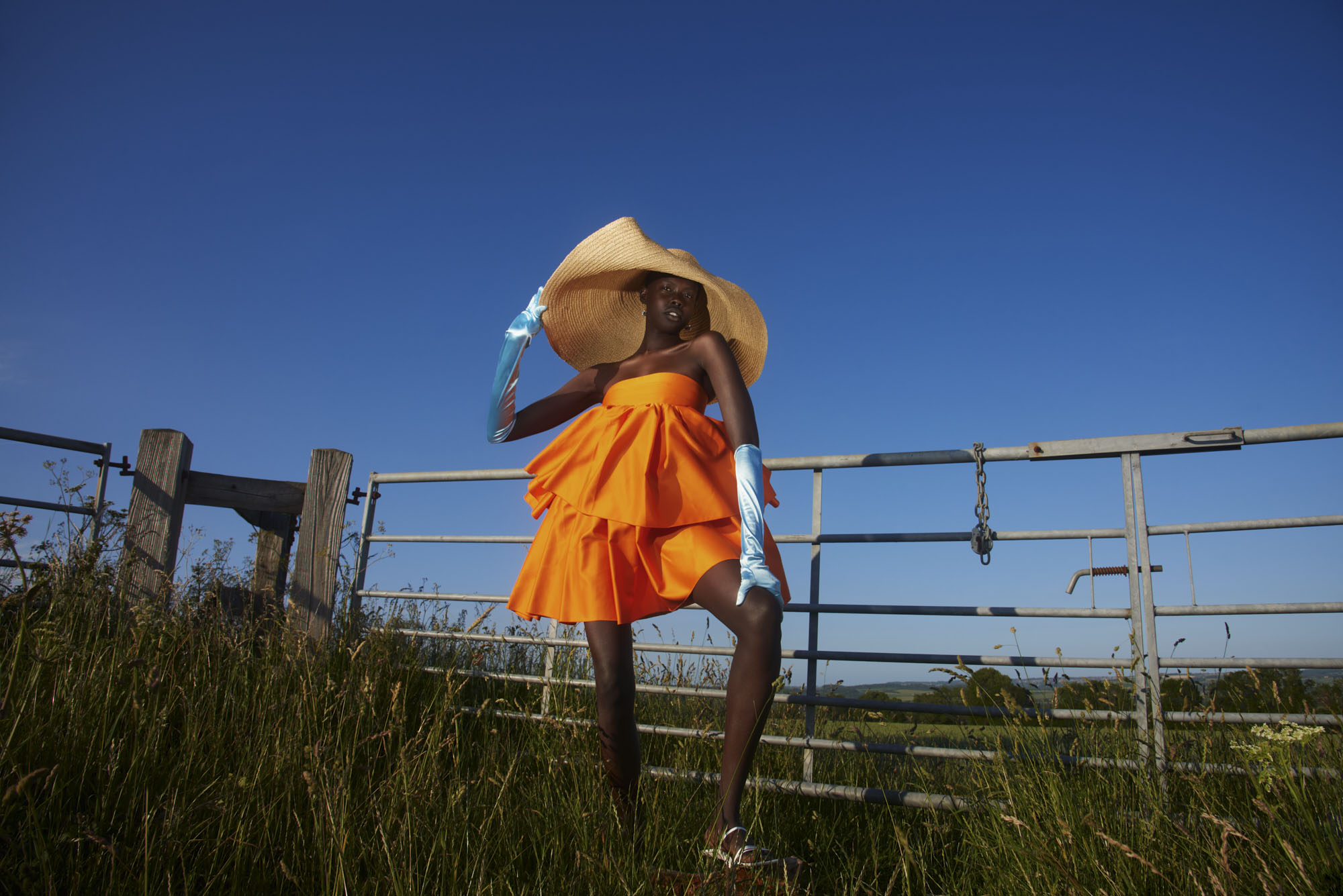

Rental platform Rotaro is on a mission to use fashion rental as a vehicle for wider industry reform. Founded in November 2019 by former WGSN trend analyst Georgie Hyatt and her partner Charlie Knowles, Rotaro’s ambitions go beyond just dressing young women in of-the-moment brands. “What we’re trying to do is re-engineer the whole fashion industry – it’s a very big task,” explains Hyatt over Zoom. “We’re trying to change the way people are getting dressed, to encourage people to buy less but buy better, and whenever they need something new, to come to rental.”
By offering pieces from much-hyped emerging, independent (but most importantly, conscious) brands like Cecilie Bahnsen, Cult Gaia, Jacquemus, House of Sunny and Stine Goya, Rotaro is taking an aesthetics-led approach to encouraging more sustainable consumption of fashion. “We found that in terms of marketing, sustainability as an educational piece isn’t enough, it can’t be your whole offering,” she says. “You need to have a lot of other reasons why people are going to come to you, and we found that accessibility to great brands at a lower price, as well as [encouraging] exploration of personal style, are big reasons.”

The trifecta of Rotaro’s price point, cult brand selection and an ethical ethos results in a customer base largely made up by Gen Z, who are keen to experiment with their style, but probably don’t have the budget to buy a £400 dress. “People really understand that what we’re offering is a platform to discover new brands or new styles and to push the envelope on your own style,” says Hyatt. “I think our Gen Z customers really enjoy that you can rent a metallic pink dress, even if they never want to own it or wear it more than once. Renting allows them to inject newness into their wardrobe.” Indeed, part of the platform’s success with Gen Z customers comes down to a shifting definition of “new” among a younger generation. “What’s great about them is that ‘new’ to them doesn’t mean it’s new out the box,” she says. “New to them just means it’s new in their lives.”
Beyond ensuring their partner brands are up to scratch, Rotaro is also embedding sustainable practices across its own operations. “A criticism of fashion rental is that it leaves a large carbon footprint,” says Hyatt. “So we want to make sure we eliminate as much of this footprint as possible. We’re working with a carbon neutral delivery service, and we use biodegradable and recycled packaging.” Hyatt says the Rotaro team are currently developing reusable bags to cut out single-use packaging altogether.
These earth-conscious decisions are important for a few reasons – not only to reduce Rotaro’s environmental impact, but to incentivise their customers through tangible rewards. “We’ve partnered with Ecologi to plant a tree for every single rental,” says Hyatt. “We want to have that positive reinforcement – every time someone rents something, they’re reminded that they’re doing something positive for the environment.”
So far, so good. But how exactly is Rotaro tackling the wider issues facing fashion? Here’s where things get really interesting. “We’re currently developing technology that will enable us to work directly with brands to help them make better product decisions.” To do this, Rotaro is tapping into their data to guide brands in the design phase. “We’re giving them qualitative and quantitative feedback as to who is renting their garments, why they’re renting them, the demographics, how the products have fared in the market, and then going one step further to make sustainable product recommendations,” says Hyatt. “The way I see us in the future is as a key facilitator to help brands develop better products and also to break down the barrier between brands and their circular economy customers.”

Launching a business is difficult, but launching one four months before a pandemic is something else. For two months of 2020, Rotaro used their logistics facility to send fruit and vegetable boxes to people in need. “We didn’t want to promote fashion rental because we thought it was insensitive,” says Hyatt. “There was an oversupply of vegetables from farmers that supplied closed restaurants, and there were people who couldn’t get online delivery slots, so we connected the two for a few months. It had nothing to do with fashion rental, but it felt very much part of our ethos.”
Rotaro pivoted back to fashion in the summer, and rental rates mimicked the peaks and troughs of various lockdowns throughout the year. “Every time we’ve seen an easing of lockdown there has been a surge in rentals. We had a really excellent festive period, even though we were in lockdown,” says Hyatt. “I think people were just making the most of small occasions, which I think was really cool. That’s very much what we’re about as a brand – celebrating life and bringing joy to people’s lives in a mindful way.”

In the long-run, Hyatt thinks the pandemic has actually accelerated the success of fashion rental platforms. “There was a lot of information [about consumption and greenwashing] being shared in our wider communities, and people have had the opportunity to reconsider their relationship with fashion,” she says. “They’ve had a wardrobe reset and I really think that people will be more mindful with their purchases going forward.”
However you’re choosing to ring in the aforementioned Roaring Twenties, Hyatt is keen for rental platforms like hers to be top of mind for people who plan on dressing to the nines at the earliest opportunity. “Fashion is such a form of self-expression and we’ve all been locked up wearing sweatpants for too long,” says Hyatt. “People are celebrating life through fashion, which is fantastic, and Rotaro will be there to help them make better decisions as they’re re-emerging into the new normal.”
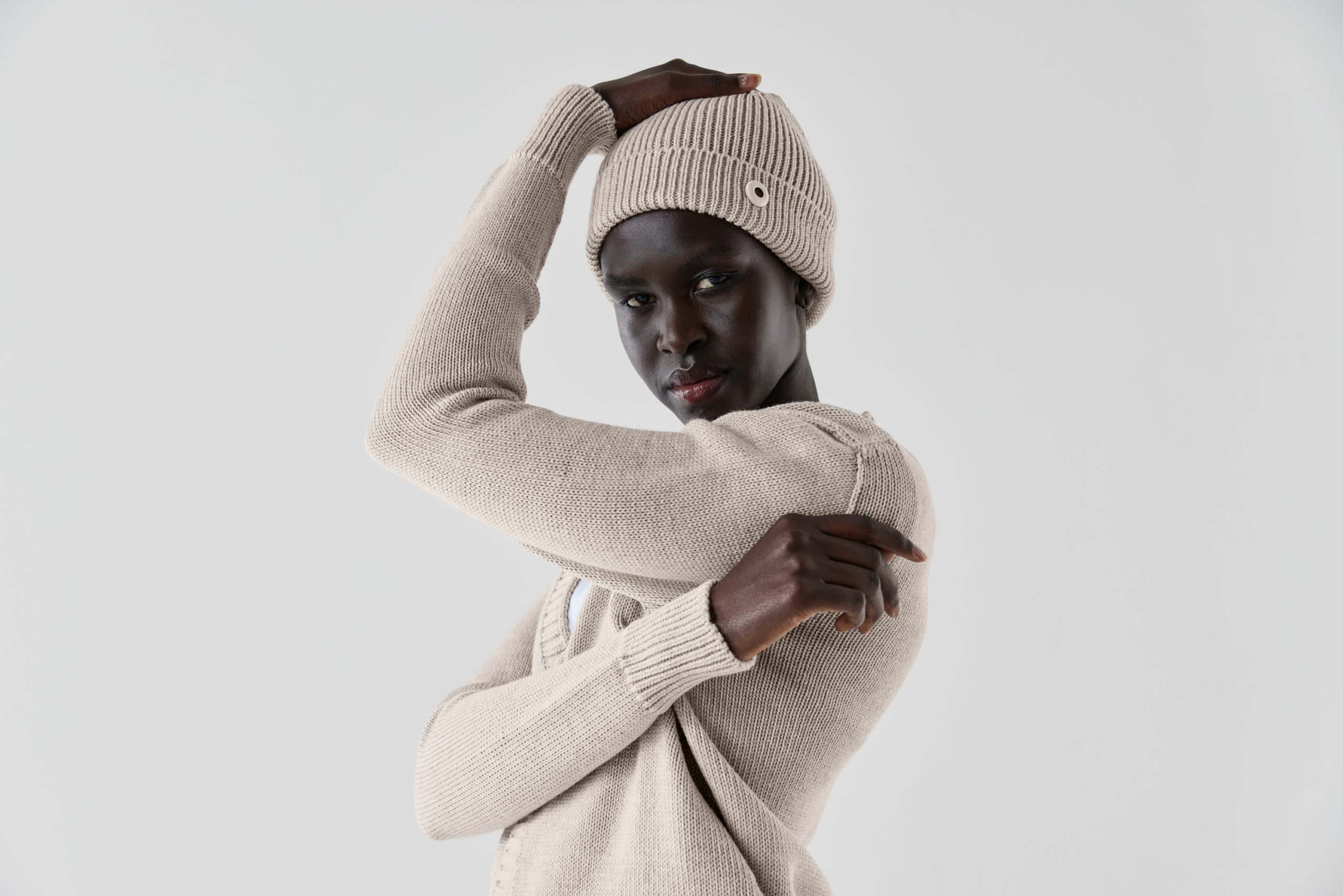
By drawing a direct line between the origin and the end product, the London-based knitwear brand is taking a novel approach to traceability, with the aim to ignite a deeper emotional connection to clothing. “We want people to understand that what they’re wearing comes from nature, and to remind them that it’s out there,” explains Alexander Lewis, head of design at Sheep Inc. After you buy Sheep Inc. jumper, you can adopt and name your sheep, watch it meander around a paddock and learn more about the brand’s supply chain from sheep to sweater. But how?
Every Sheep Inc. garment has a small circular NFC (near-field communication) tag attached to the bottom hem, which can be scanned using your phone. “The NFC tag is a design decision linked to the tags sheep have on their ears,” says Lewis. It’s become somewhat of a signature design detail for the brand, although the tag initially caused some confusion. “In the very beginning [October, 2019], the tags were our brand yellow, which is super bright,” says Lewis. “But we had people asking us if it was a security tag, or they thought that colour yellow meant it was hazardous in some way.” These days, though consumers are becoming increasingly familiar with tech woven into their clothing, the NFC tags tonally match the colour of the jumper, and are made from snap buttons for easy removal.
When it comes to educating consumers, NFC tags provide Sheep inc. with an opportunity to talk about their supply chains in an accessible and engaging way. It also allows the brand to explain certain sourcing decisions, like why their wool isn’t farmed closer to home. “We only use Merino wool that we source from three specific farms in New Zealand because they’re regenerative and carbon negative or neutral,” says Lewis. “There’s no farming here like there is in New Zealand, we can’t replicate that,” says Lewis. “You can see in our supply chain where the most carbon emissions come from, and it’s the farm. That’s why we have to work with farms that are regenerative, so that they’re not letting out all this Co2 without any recourse.” From New Zealand, the wool travels to Italy, where it’s spun into yarn by a mill run entirely on renewable energy, then manufactured using zero-waste knitting machines in Portugal.

“It’s not unusual to have sustainability rear its head around every thought process,” says Lewis. But does working to such strict eco-criteria feel creatively limiting? “I think you actually have more opportunity for creativity when you have strict guidelines because you have to really hunt for the solution, and you’re more creative about it,” he says. “The constraints of designing in a sustainably minded way are actually more interesting.”
Currently, the Sheep Inc. range is made up of six styles – four jumper styles, a cardigan and newly released beanie. This pared-back offering is due to the brand’s less-is-more ethos, an approach that has felt counterintuitive at times for Lewis, who has worked in the fashion industry for the better part of 15 years. “We’ve had to remind ourselves that there’s no need for us to bring out five new styles this season, we can just add one new style that adds to the collection instead of diluting it,” he says. “It’s a slower approach – if this was a fashion brand on [the fashion week] schedule, there would be more concern about getting things done on time. If something isn’t ready, we’re not going to be released, so it’s a much more sustainable approach to working.”

Since it’s inception, Sheep Inc. has been trying to create a truly genderless brand, but they’ve grappled with the complexities of garment construction. “There’s this cerebral notion of trying to create a genderless garment. At the end of the day, it ends up being a boyfriend fit, which is still gendered, so it’s a complicated space within fashion,” says Lewis. “Sizing and size inclusion is a really big frontier, and although we’re probably not going to be the ones to crack the code, or even shift the needle, it’s important for us to be hyper-aware.”
At only two years old, the brand is fast-moving and constantly looking to the future of fashion. With the potential for lab-grown leather and cotton to replace their natural counterparts on the horizon, it’s no surprise that Sheep Inc. have already started exploring the world of lab-grown alternatives to eventually replace Merino wool. “We’re discussing a shift from Sheep Included to becoming Sheep Excluded, and we’re definitely working on it,” says Lewis. “We’re looking at how to work with biopolymers and lab-grown wool, but it’s difficult to say we’re going to shift from 100 percent natural to 100 percent synthetic wool, it’d be incrementally done with blends.
Even the research and development process of making a sweater is long and drawn out, but when you start getting into something that’s at the frontier, there is so much unknown.”

From innovative new materials to traceability tech, Sheep Inc. really are at the forefront of a new wave of sustainably minded, forward-thinking fashion brands offering eco-credentials that they can back up. Lewis predicts it won’t be long before bigger brands jump on the bandwagon. “People have different visions of what qualifies as having “made it” and I think it’s when you’re knocked off by a bigger brand,” he says. “In a weird way, if a business came along and made all this fan-fare about how they were doing what we’re already doing, but as though they’re the first, that’s actually a really good feeling. It means we’ve done something right, and that’s wonderful.”
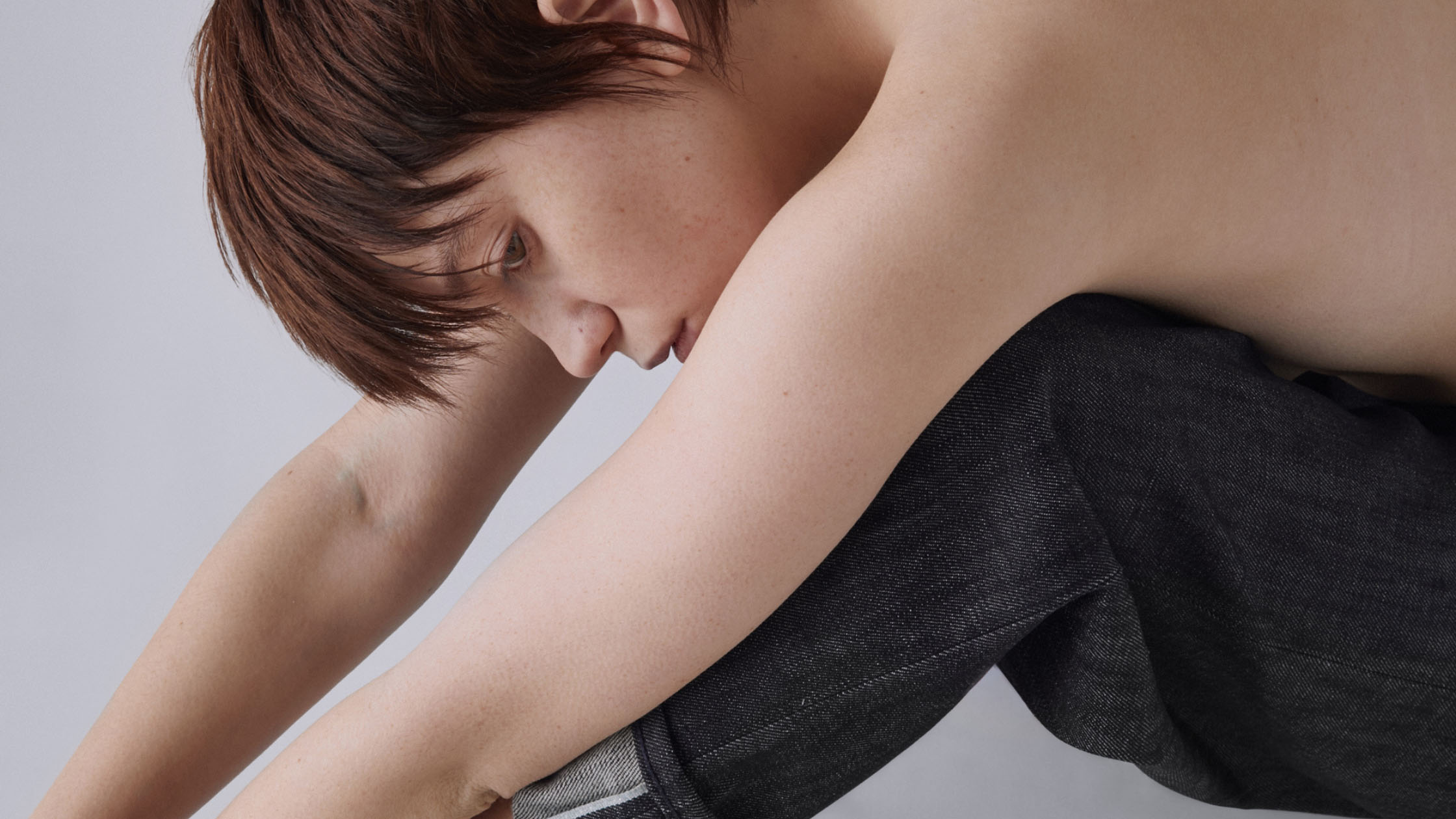
Denim is notoriously unsustainable. It uses vast amounts of water in production (7,000 litres of water per pair, to be precise), the dyes that give our jeans colour leach chemicals into the natural environment, and denim distressing processes like sandblasting can be incredibly dangerous to human health. Not to mention the forced labour practices found in cotton farming hubs like China, Uzbekistan and India.
So how do you build an environmentally conscious denim brand from the ground up, with all these factors to contend with? It’s a question that Pete Hellyer asked himself last year, when the pandemic put on hold his work as a freelance creative director.
“I suddenly found myself with a lot of time and a real awareness that I was very reliant on other people to get by, which felt a little scary,” says Hellyer, who has previously held roles as the creative director at e-commerce platforms Ssense and The Outnet. “I live in denim and white t-shirts, and I wanted to buy a new pair of jeans, probably to cheer myself up,” he says. “I was looking for a sustainable pair and I could only really find ones that were more heritage in their styling — that Levi’s aesthetic — and that’s not me.” What began as a spot of retail therapy quickly became a business idea and a year later, he’s just launched his ethical agender denim brand, non.
Consisting of three cuts of jeans, a jacket, overshirt, bucket hat and tote bag in three different denim washes, the first collection is pared back and unfussy, offering wardrobe staples that Hellyer hopes will speak for themselves. “It’s a wardrobe of core essentials that you need,” he says. “We’re not going to have trend-led pieces. I was inspired by that quote [by Li Edelkoort, an influential dutch trend forecaster] when she said: ‘Fashion is dead. Long live clothing.’”
non is “conscious by design”, partnering with leading sustainable denim producer ISKO to create a signature selvedge denim made from 50% organic cotton and 50% recycled cotton. Every detail down to the choice of zippers, buttons and threads has been chosen with the entire life cycle of the product in mind. Even still, Hellyer is honest about the downfalls of bringing more new clothing into a textile saturated world. “It’s difficult to be a sustainable brand within a system that’s inherently unsustainable,” he says. “I identify the brand as conscious by design, and that really is me trying to be aware and conscious of every decision that we make — our impact, the positive things that we’re doing, some of the negative aspects of what we’re doing, and being honest about that.”
Transparency is key for Hellyer, who is keen to make information as clear and accessible as possible for his potential customers. To do so, he’s dedicated a page of the brand’s website to naming everything from the origins of the hardware to the factory that manufactures his jeans. “When I went freelance, I started working with a couple of sustainable brands and I found all the labels really confusing,” he explains. “I felt like I suddenly was learning a new language. So I thought if I’m confused, as somebody who has worked in the industry for 15 years, customers must be befuddled.”
Using selvedge denim (which is considered superior to raw denim in terms of durability) was a decision that posed an ethical dilemma of its own. “I wanted to use 100% recycled cotton, but when you recycle cotton, you lower the fibre length, which reduces the strength, which reduces the quality,” says Hellyer. “I have tried to find that tipping point of having the best credentials, but also make a product that would last more than a few years, because if something can last a long time, then it’s inherently more sustainable.”
Hellyer has considered the full life cycle of a pair of non jeans just as much as the manufacturing process. Partnering with EON, a fashion tech company that tags clothing using an NFC tag, allowing him to share more information about the product with customers. Hellyer is planning to offer everything from information about the materials, to where to get your jeans repaired and how they can be recycled, as EON’s technology becomes more sophisticated and widely used. “I think it’s important to have greater responsibility for the item once we’ve made it,” says Hellyer. “That includes helping the customer look after their jeans and helping the jeans to be recycled at the end. I think it’s a big problem that brands make clothes, and then they don’t care.”
Sizing agender denim wear has thrown up a number of challenges for Hellyer, not just for the fact that men and women tend to have very different body shapes. “The thing with unisex and agender clothing is, how do you size them in a way that all people understand, that isn’t gendered?” he asks. “We’ve really put time into making inclusive names and sizing. With the jeans, I didn’t want to call them wide leg or loose leg, because it might not be loose on a larger person in the same way that straight will not necessarily be a slim fit on everyone.” The jeans range from size 25 to 36, and the website has detailed sizing information to help reduce returns. “Most online return rates are really high, and that’s such a waste of shipping and carbon footprint,” he says. “So we want to encourage people to actually measure themselves for their jeans.”
With non’s first collection stocked at Ssense, as well as independent boutiques like The Wasted Hour in Hamburg, Beamhill in Helsinki, Never Never in Belfast, plus a handful of others, what’s on the cards for the next few seasons? “Multi-functionality and modularity are things I’m really interested in,” says Hellyer. “I want to explore different ways to wear things, like reversible jackets and detachable sleeves, so you can wear it as a vest in the summer and as a jacket in the winter. If you can wear it all year round in different ways, it means you only need one jacket instead of two, or three, or four of them.”
For now, perhaps the brand’s biggest challenge will be convincing customers to swap their well-worn pandemic joggers for a pair of jeans as lockdown in the UK begins to ease, but he’s hoping that a denim revival is on the horizon. “Denim isn’t very cool at the moment,” he concedes. “Everyone lives in sweats because of lockdown, but I hope that once a sense of normality returns, that sense of dressing up is going to return too.”
Far from just another lockdown project, non is the result of 15 years industry experience combined with a drive to rewrite the rulebook on denim and offer a more sustainable, conscious way forward.
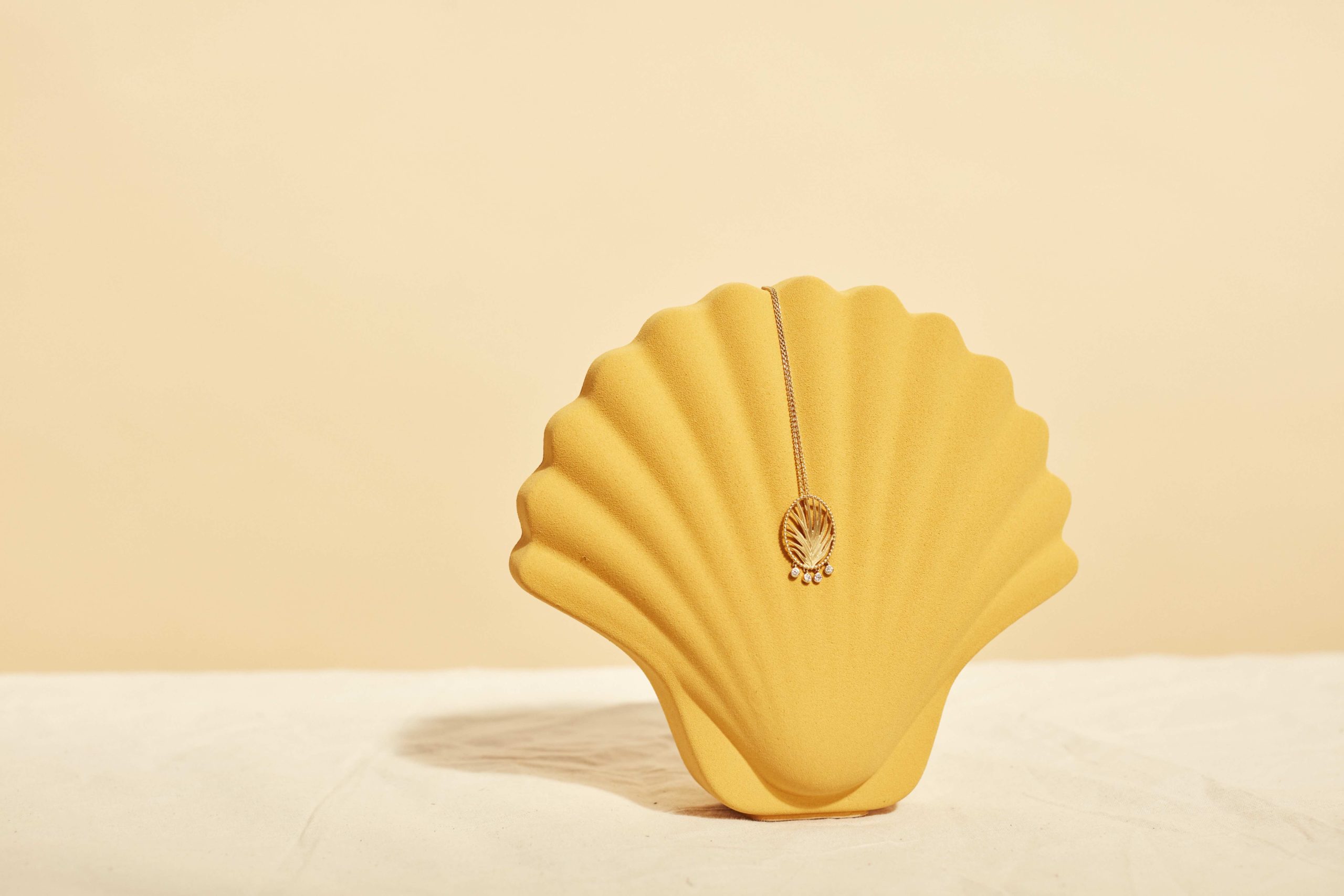
Demand for ethical jewellery is on the rise, and it’s not just your everyday, demi-fine jewellery brands that are taking their sustainability credentials seriously. In the fine jewellery category, where precious stones are more commonplace, brands are turning their backs on the traditional diamond trade in favour of the lab-grown variety.
Kimaï, a London-based jewellery brand, is one young business betting on lab-grown diamonds in the wake of a generational shift towards ethical consumption. It’s founders, Sidney Neuhaus and Jessica Warch, both come from Belgian diamond trading families, so they’ve seen first hand how the establishment is failing to keep up with changing consumer priorities. “Over the years, we came to realise that the industry wasn’t evolving with our generation,” Warch says over Zoom. “We felt like it didn’t talk to us — it’s a very traditional and intimidating industry — plus with all the controversies from blood diamonds to child labour, that’s not what we’re looking for these days.”
It’s widely known that the diamond trade has a long and problematic history. Extracting diamonds from the earth using open pit mining is an environmentally disruptive and carbon intensive process — an estimated 57kg of carbon is released for every carat of diamond mined and some mines are so huge, they can be seen from space. Not to mention the human rights issues associated with diamond mining. Despite the introduction of the Kimberely Process in 2003 (intended to prevent the flow of conflict diamonds into the industry) there are still loopholes that allow for the exploitation of workers. The Kimaï team believe that traditional diamond supply chains — which includes the miners, transporters and traders — are still therefore untraceable and untrustworthy. “Our mission is really to bring transparency to an industry that has known many controversies to show that today, we can do things differently and have the exact same result,” says Warch.
Enter lab-grown diamonds. Kimaï works directly with a lab in Israel and a team of jewellers in Antwerp who make and send the finished product straight to the customer, meaning their supply chain cuts out all of the middle men. As for the diamonds, they’re commonly made using a Chemical Vapor Deposition method, which essentially places diamond seeds (small pieces of natural diamonds) into a chamber filled with methane and hydrogen gas, which are heated to between 900 and 1200 degrees celsius. In under a month, you have a rough diamond ready to be cut and polished.

Despite the increasing popularity of lab-grown diamonds — a 2018 study found that 70 percent of Millennials would consider an engagement ring with lab-grown diamond — there’s still an element of education needed to convince traditionalists. “Many people can see them as fake diamonds, so we see part of our role is to educate them on the stones,” says Warch. “Lab-grown diamonds are identical chemically and physically to mined diamonds — our parents are in the industry and no one is able to tell the difference between the diamonds, and at least these don’t come at a cost for the planet or the people working in mines.”
Millennials might also be drawn to lab-grown diamonds because of cost — they’re often at least 30 percent cheaper than mined ones, because much of the perceived value of a natural diamond comes from the huge effort it takes to extract it from the earth. The brand’s range of engagement rings starts at £1,360, a far more accessible price point considering it was once considered standard to spend three months salary on a ring.
Warch believes that their price points reflect a significant shift away from the way her parents’ generation value jewellery, compared to the Millennials buying from Kimaï. “Our parents were putting all of their savings into jewellery, but we have different priorities,” she says. “We want to travel and experience different things while still wearing nice jewellery, so the value of the piece doesn’t come from the price of the stone, but the emotional value behind the piece.”
For now, the brand sells through their online store. This is partly out of necessity (COVID has temporarily shuttered their brick-and-mortar retailer, Browns) but this hasn’t proved to be a barrier to sales. In fact, fine jewellery sales globally have boomed since the start of the pandemic. In the US, one on Kimaï’s strongest markets, jewellery sales grew by $1 billion in June, July and August compared the 2019, with sales from engagement rings leading the growth. “Most people are at home, so it’s the right time to be selling pieces online and of course, even if you’re not wearing new clothes, you know that jewellery is going to last,” says Warch.
So how do you sell engagement rings online? As with most occasions in the last year: “We do it on Zoom!” says Warch. “We get on a call with customers, we try to understand what they’re looking for and based on that we offer them different stones and walk them through the entire process.” This is where being a young start-up plays into Kimaï’s strength — the personal touches of dealing with a small team is reassuring. “Customers have our number, they know they can contact us at any time, so although you’re not seeing the piece in person, we’re sending as much information as possible.”
The lab-grown diamond market still holds an extremely small market share — by 2023 it’s projected to represent only two percent of the diamond market — but it’s growing rapidly. De Beers, the world’s leading diamond seller, announced they’d enter the world of lab-grown diamonds in 2018, last year completing a $94 million lab in the US where they plan to create 200,000 lab-grown diamonds a year. It’s certainly an investment that Kimaï believe will pay off as the next generation of fine jewellery buyers come of age. “We grew up with a new mindset [regarding sustainability], but the younger generation are even more extreme — they grew up knowing they want to have a positive impact on the environment,” says Warch. “I think it’s just going to keep growing and keep taking a bigger market share.”
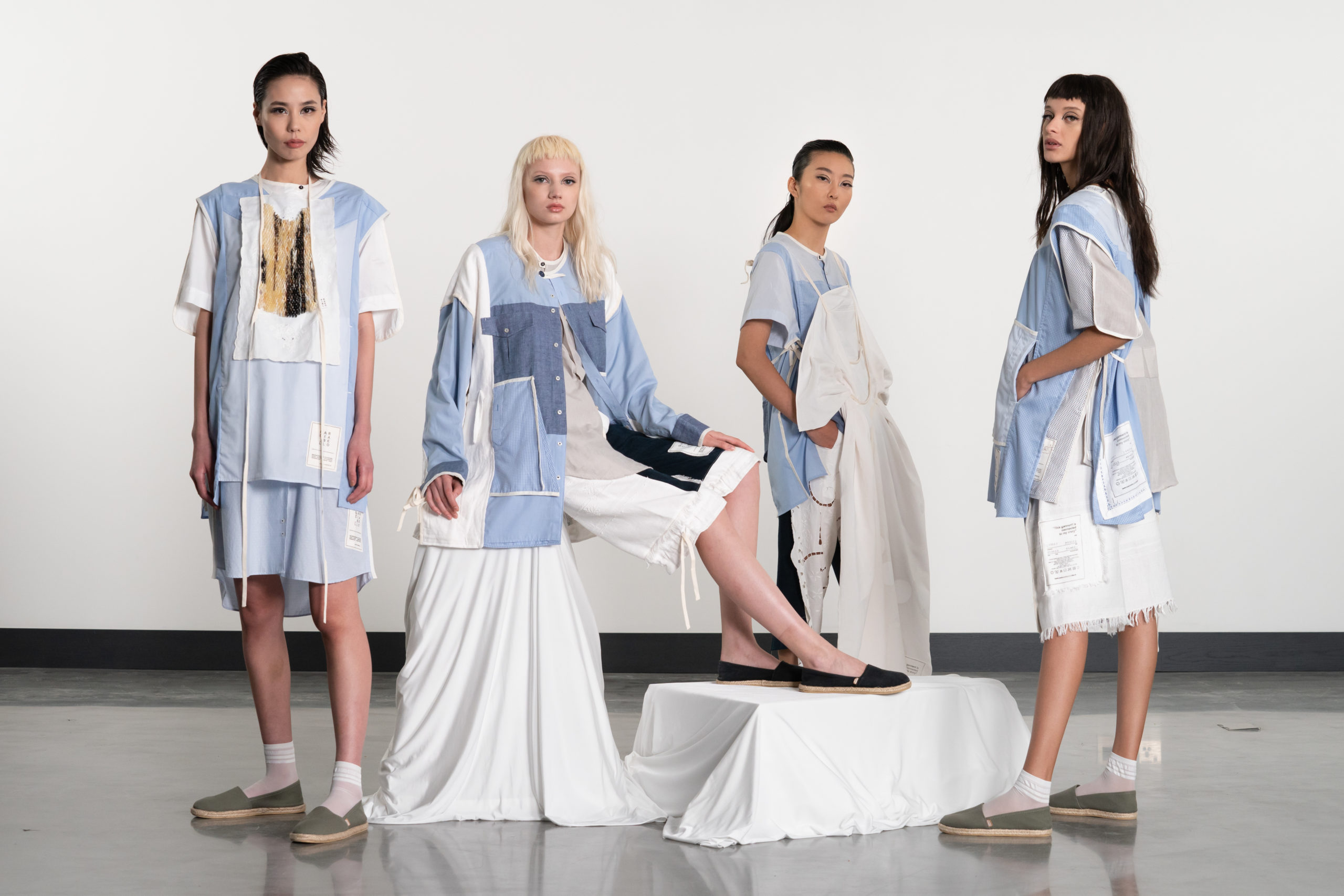
A growing number of designers and textile factories are innovating with hyper-local textile waste created within their communities to offer new, exciting ways of reducing and transforming unwanted pre and post-consumer textiles into covetable goods.
The fashion industry’s textile waste problem is one that has been ignored by brands since the dawn of fast fashion. But just as clothing production and consumption has increased exponentially in the last decade, so too have the piles of clothing around the world that end up in landfills or incinerated. Currently, only 1% of textiles gets recycled into new clothing and without drastic industry-wide change, 150 billion tonnes of clothing could be in global landfills by 2050.
Accelerating textile waste innovations are thanks in part to our changing definition of waste, says Dr Christina Dean, founder of upcycling brand The R Collective and Redress, a Hong Kong based NGO that aims to prevent and transform fashion’s textile waste. “If we rewind 10 years, waste was a filthy word – but I don’t think it is anymore – consumers are beginning to legitimise and care about waste reduction,” she says. “I think in the mainstream consciousness there is an understanding that there’s a lot of waste, and that it’s not really waste, it’s just a resource that hasn’t been utilised.”
The shifting perception of waste has also been fuelled by the pandemic, which highlighted exactly what happens when the production, shipping and sale of clothing comes to a grinding halt. “The stranded or cancelled orders and materials, garments stuck in warehouses or on the shop floor — all this created a much more tangible understanding of just how deadstock garments can actually accumulate,” says Dean.
While COVID shone a light on the systemic issues that need addressing, on a smaller scale there are already a host of designers and textile manufacturers tackling waste in forward thinking, innovative ways. Their solutions are hyper-local, working with the textile waste generated by their community or nearby industries to create products that are reframing how we think about unwanted textiles.
But what is hyper-local waste and how can designers find and use it?
“Finding your waste streams means going into the material source you like and finding the places in which it originates,” says Dean. “It’s about finding a waste source that is both creatively exciting, suitable for the product you’re making, and is in some way reproducible or replicable.” Broadly speaking, hyperlocal waste can be split into two categories: pre-consumer and post-consumer. Crucially, brands should be looking for waste textiles that are local to their manufacturing, not necessarily their studio. “The main reason for that is reducing the cost of moving waste,” says Dean. “Waste is cheap or free to get, but there is a lot of handling costs and limitations that come with that, so keep your supply chain close to the waste.”
Meet Juliana Garcia Bello, an Argentinian designer based in Arnhem, an hour outside of Amsterdam. She launched her label, Garcia Bello, in 2017, designing pieces made from old clothing donated by her local community in Buenos Aires. After moving to the Netherlands in 2019, Garcia Bello implemented the same sourcing model she used in Argentina and quickly got to know her community in more ways than one. “I put flyers up around my new neighbourhood and received a lot of messages and donations,” she says. Working with locally donated materials means that Garcia Bello collections are a direct reflection of her community. “I always receive the materials first and then try to understand what I have to work with. These are the materials that I have here, in this neighbourhood with these neighbours, so that’s what I need to work with.”
Last year, Garcia Bello entered the Redress Design Award (RDA), the world’s largest sustainable fashion design competition. It was here that she developed a production system that requires 16 old garments: two pairs of jeans, five tablecloths, and nine shirts that can be deconstructed and transformed into 16 new garments. Her innovative framework, that any designer could work with using their own materials, won her the 2020 RDA Womenswear prize. “Juliana is a replicable designer,” says Dean. “She’s using a post-consumer waste source, like shirts — every country has shirts — and the pattern in itself is like a cookie cutter. Whether you’re in Haiti or Poland, particularly in places with post-consumer waste, that concept can be very interesting.”
While post-consumer solutions are important, it’s crucial to address the waste that is generated before textiles become clothing. When garments are cut in the production phase, as much as 15% of the fabric can end up as waste. Going even further back into the supply chain, the Fixing Fashion parliamentary report found that 440,000 tonnes of supply chain waste is generated in the preparation of fibres to make yarn and in the garment production phase.
Working to reduce pre-consumer waste in Southeast Asia, a global manufacturing hub, is Aummy Ninkamhang, the CEO of textile innovation startup Stelapop. Based in Ayutthaya, Thailand, Stelapop sources pre-consumer waste textiles from neighbouring countries like Vietnam and Cambodia, transforming offcuts into materials that can be made into everything from furniture to coat hangers. Stelapop has developed 20 different materials, all of which are coloured speckled by recycled textile fibres.
Still in its infancy as a factory, Stelapop is already working with companies like Converse, Everlane and American Eagle to develop new materials from textile waste that are beautiful, high quality and versatile. Their goal is to one day produce durable outdoor materials that can be used to build houses. “We don’t want to produce something from waste that will just become waste again,” says Ninkamhang. “We want people to appreciate it, so we always ask ourselves: how can we turn waste into something that everyone will love?”
Originally a textile designer, Ninkamhang has seen first hand the amount of pre-consumer waste created by fashion and is passionate about getting brands to take responsibility for this stage in the supply chain. “Brands are really focused on post-consumer waste because there’s more marketing to be done around it,” she says. “It’s something consumers understand, so it creates more impact with them. But brands have no idea how much production waste they create, and they don’t feel like they need to be responsible for it.”
Part of the solution, she believes, is for brands to design with a garment’s end of life in mind in order to ensure it can be recycled easily. In order to de-trim waste textiles of buttons and zips, Stelapop had to develop a machine that could do this time-consuming, usually manual task. Ninkamhang says the fact that there is technology to attach but not remove trims from garments shows a lack of forethought that is typical of clothing production. “We want everyone to be responsible for their production and to think about closing the loop before going to the store front,” she says. “We have to think about how to assemble and disassemble these trims from the beginning — we have to care about these small things before we focus on the big things.”
Looking at the wider picture, how do we reduce waste creation in the first place? Reducing excess stock is at the core of the issue, and Dean believes that technology will be fundamental to this. “We need technology to understand what people are buying and make it quicker,” she says. “Making it quicker always makes people feel frightened, but actually, faster supply chains are more responsive and therefore would reduce waste.” Digital technology can also be used to understand what materials you’ve got, and where they are, she says. “If a lot of businesses knew their own inventory, they’d probably design into it a lot easier. The reality is that they’re all working off old Excels — a hangover from the analog days.”
All of this really boils down to the seemingly insurmountable issue of reducing consumption. But seeing as dismantling the consumption-driven economy that the fashion industry relies on is unlikely in the timeframe we have to get in line with the Paris Agreement, there will always be opportunities for innovative, scalable solutions to textile waste. “I think consumption is really important, which is at odds with what one might think as an ‘environmental person’,” says Dean. “But ultimately, I think consumption can be okay if it’s done purposefully and intentionally, that’s where fashion can be a force for good.”

We’ve known for a while that fashion is a significant contributor to carbon emissions — in 2015 polyester production alone was responsible for 700 million tonnes of CO2 and in 2016, projections under a “business as usual” scenario saw fashion on track to increase carbon emissions by 49% by 2030. Even with COVID thrown into the mix, it’s showing no signs of slowing down — while the industry needs to cut greenhouse gas emissions by 1.1 billion tonnes by 2030 to be in line with the Paris Agreement, in August McKinsey found that we’re actually on a trajectory to overshoot this target by almost twofold.
The mounting evidence of a link between the pandemic and the climate crisis has helped push forward the carbon agenda, believes Luke Gaydon, co-founder of Terra Neutra, a consultancy launched in 2019 that offers, among other things, carbon offsetting products. “It’s easy to look at bushfires in Australia and the Amazon or flooding in Bangladesh, and think it’s quite a long way away. But COVID is on our doorstep,” he says. “If you think about the news headlines, obviously COVID, the US elections and Brexit have dominated it, but the environmental agenda has still managed to stay at the forefront of media coverage in spite of all those things.”
While a growing media coverage has certainly helped raise awareness among a wider audience, it’s evident that education, particularly when it comes to fashion’s carbon footprint, is still lacking. “People are engaged with this as an idea, the notion of their own footprint, taking responsibility for it and working out how to reduce it, but a significant majority of people are still unaware of the extent to which their daily lives are carbonised,” says Gaydon. “Do they think that air travel produces harmful emissions? Yes, that’s a given. Do they make the connection between their carbon footprint and the shirt that they bought yesterday? No, the majority of people don’t, so there is still a big job to do just to raise people’s awareness of that basic fact.”
Considering 70% of greenhouse gas emissions are produced through the supply chain’s hidden activities like material production, preparation and processing, it’s no wonder that consumers don’t know the full extent of the issue. “There is a lot of nuance when it comes to fashion and sustainability,” says Pauline Op de Beeck, Fashion Sector Lead at the Carbon Trust, a sustainability consultancy that works with businesses, governments and organisations towards a low carbon future. “Arguably, it’s way too much information for a clothing tag, so that’s why there’s a lack of information.”
“I would like to see mandatory labeling of products to create that awareness of the link between something I buy and my carbon footprint. There’s nothing like putting a price on something for people to understand: there is a cost.”
At the start of the year, the Carbon Trust released a report in conjunction with fashion tech platform ORDRE that uncovered the carbon footprint of fashion weeks, finding that each year the industry emits 241,000 tonnes of carbon emissions from travel alone. While this is just a fraction of the problem, it proves a point. “That report speaks more to the structure of the industry, that it’s something to be questioned, rather than this being the biggest impact in the sector,” says Op de Beeck. “Fashion shows are a close to home example of how the entire system needs to be rethought.”
Nevermind getting consumers up to speed, fashion businesses themselves are only now starting to face their carbon footprint. “Until COVID, many brands probably didn’t think carbon was going to be important for them,” says Op de Beeck. “Two years ago, carbon was something only the very large businesses were leading on, but now it has really trickled down into all brands, and COVID has really made that difference.”
The trouble is, even for proactive businesses that want to reduce their carbon emissions, the process is time consuming, expensive and fraught with challenges. Genia Mineeva, who founded her accessories label BEEN London in 2018, has built a business that designs with zero waste, uses recycled materials, and is locally made in east London, a few suburbs away from their studio. Naturally, understanding the brand’s carbon footprint is an important part of the sustainability journey for Mineeva.
This desire to learn more led to a partnership with Terra Neutra, who spent several months this year performing a Life Cycle Assessment [LCA] of BEEN’s best selling Columbia bag, comparing its footprint to a high street equivalent bag. “Terra Neutra were looking for a brand that didn’t have anything to hide and we were looking for someone to do [an LCA] for us, because we wanted a tool that would allow us to do better,” explains Mineeva. “We ship everything by sea and we use only recycled materials, but what happens if we replace the recycled polyester lining with recycled cotton lining? What if we change our supplier from a Turkish to an Italian supplier? I wanted a tool to look at the bigger picture so we could see the red flags and go: this is the area of our supply chain where we really do better.” The results were impressive. While the initial estimate was that BEEN’s bag would have 1/3rd of the impact of a high street bag, final calculations found the reduction was actually 1/10th of the impact — it was 87% less environmentally damaging.
“The difference between buying one of our bags and buying the high street equivalent is the same as leaving the lights on for a year,” says Mineeva.“You would think that anyone would be interested in finding out their carbon footprint, turns out no! We knew most of the language and the concepts, but even then it was difficult. We had to convince our suppliers, one of them being one of the most celebrated sustainability leaders…it wasn’t easy, but it was 100% worth it.

Partnerships between small transparent businesses like BEEN London and Terra Neutra provide useful case studies, but to ensure scalable industry-wise change, there are a few things that need to happen, and fast.
For a start, legislation is urgently needed, says Gaydon. “The more that the fashion industry can align around a set of labels or accreditations, the better,” he says. “Having brands mark their own homework is not the way to go — not because I don’t trust them to do it properly — but because consumers won’t and then the integrity of the whole thing is thrown into question.” He’s right — a recent Compare Ethics report found that only 18% of UK shoppers trust a brand’s sustainability claims on face value. “This is not something we should be letting the free market decide,” continues Gaydon. “People say the markets will work it out, but I’m not willing to trust them to do it. I think the government has a critical role to play and it’s in regulation and legislation. I would like to see mandatory labeling of products to create that awareness of the link between something I buy and my carbon footprint. There’s nothing like putting a price on something for people to understand: there is a cost.”
Secondly, the industry must acknowledge that aiming for carbon neutrality, largely achieved by off-setting carbon emissions, is the bare-minimum requirement needed to mitigate fashion’s carbon footprint. “I see our responsibility to our customers is reducing first and offsetting second,” says Mineeva. “But you can’t reduce until you have a full knowledge of every move you make as a business. It’s all great to add an offsetting option, but that alone is not a solution.” Gaydon believes that reframing the conversation to focus on carbon positivity rather than neutrality is more aspirational. “Net zero is brilliant, carbon neutral is brilliant, balancing the books is brilliant,” he says. “But as a goal and challenge that everyone can get behind, neutral and net zero don’t get me energised and enthused. Whereas carbon positive — you’re actually doing that bit more.”
Op de Beeck believes there is value in both approaches, as part of a multifaceted solution to fixing the industry. “For me, the most important thing is not whether a company sets a carbon neutral target or a carbon positive target,” she says. “It’s actually, what is the level of ambition of the decarbonisation plan? Ultimately, if you’re not reducing your emissions in line with the Paris Agreement, then you’re not changing your business model, you’re just planting trees to keep your business model intact.”
COVID has exposed how fundamentally unbalanced and unfair the relationship between a brand and its suppliers and manufacturers can be. When the pandemic hit, many brands began holding and cancelling orders with their garment factories because their contracts gave them all the power and none of the responsibility of their supply chain. Not only did this create a humanitarian crisis, but at its core, it showed the complete lack of investment — both emotional and financial — that brands put into their supply chains.
Investing in supply chains would begin to solve multiple issues, including carbon emissions produced through the manufacturing process. “Fashion is set up with really short term contracts with suppliers, brands often go from supplier to supplier, so it’s very difficult to invest in them if you only work with them for one season,” says Op de Beeck. “I think the structural issues around buying need to change so that brands can see the long term benefit of helping their manufacturers switch to renewable energy or invest in energy efficient equipment, because that will eventually reduce the costs of manufacturing. But that’s a cost the manufacturer can’t afford to make because it never has any guarantee on its contracts.”
“Ultimately, if you’re not reducing your emissions in line with the Paris Agreement, then you’re not changing your business model, you’re just planting trees to keep your business model intact.”
In both the near and distant future, technological solutions to the carbon crisis are on the horizon. Terra Neutra, for one, is looking for a way to translate the carbon assessment they did for BEEN London into a wide scale tech offering. “At the moment, it’s effectively a consulting engagement driven by humans, so you have a scalability issue there,” says Gaydon. “But if we can find a way of really making it much more accessible and a lot less operationally intensive for the companies, essentially make it digital, then I think that could be transformative.”
Other tech innovations require a little more blue sky thinking. Take Recycling Revolution, co-funded by H&M and the Innovation and Technology Fund of Hong Kong. The project’s ambitious Green Machine, which will begin commercial operation in 2021, can separate cotton and polyester to create new cellulose fibres, which can then be spun into new garments. There is huge potential for this technology to change the way we buy and recycle clothing, says Op de Beeck. “If you had a personal carbon budget, then arguably you could buy a lump of material once and for the next 5 to 10 years change the design of that,” she says. “We’re talking high level concepts here, but it’s not to say that it’s not possible, it exists now but it just takes 5 hours to do.”
Whatever the solution, it’s going to take a multi-stakeholder approach to get fashion on track to reduce carbon emissions in line with the Paris Agreement. From businesses analysing and tweaking their operations, governments introducing legislation that keeps brands transparent, technology transforming old clothing into new, as well as consumers getting more savvy about our clothing, both small and large scale solutions are out there. “We’re very optimistic about what we can achieve,” says Gaydon. “We’re excited about the growing level of awareness and desire to take positive action, be that individual consumers, the corporate sector and government. Optimism is one of our company values, but I genuinely do feel like there is increasing momentum that keeps increasing behind this movement.”

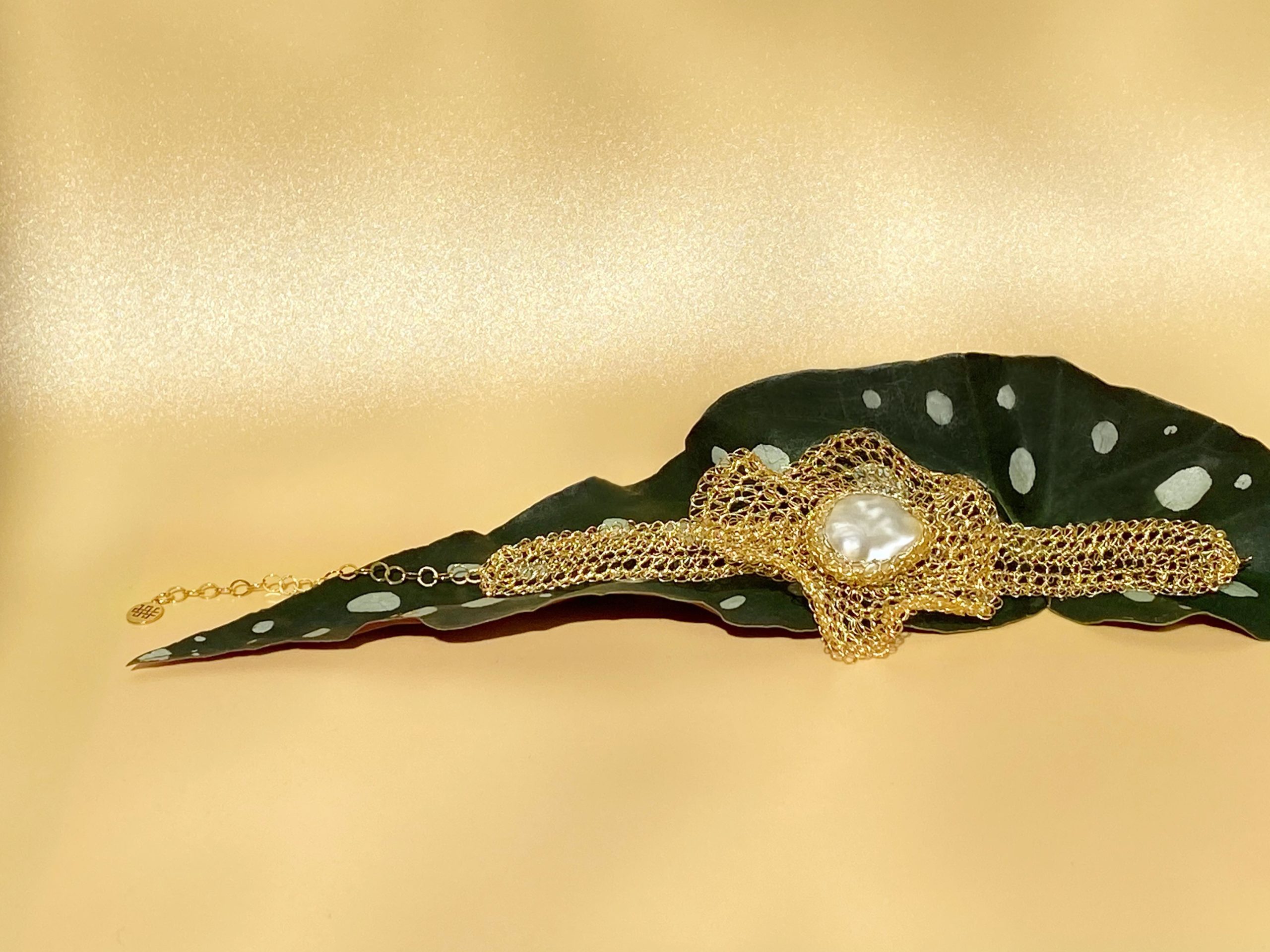
Did you know that making one pair of gold stud earrings creates 31kgs of carbon emissions? That’s the equivalent of a 200km car trip, according to ExJewel, a new Paris-based start up that is using technology to appraise and transform the jewellery trade.
Similarly to fashion, the jewellery industry has been coming to terms with its unsustainable and unethical practices — murky supply chains, the lack of industry standard certifications or proper waste management systems, worker rights abuses and the ecological havoc that is caused by mining — issues that have plagued the industry for decades.
ExJewel has just released the 2020 Conscious Jewellery Trends Report, revealing a rising consumer appetite for fair-trade accessories. Since the start of 2020, they’ve seen a 47% increase in searches for sustainability-related keywords, with “ethical jewellery” and “ethical diamond” searches increasing by 75% year-on-year.
That’s good news for the burgeoning market of ethical jewellery traders and brands seeking to right the industry’s wrongs by building businesses with sustainability at their core. From sourcing recycled materials, finding creative ways to reduce carbon emissions and providing fair work opportunities to marginalised people, to using technology to embed traceability into the supply chain, the industry is in the midst of a much needed transformation.
Traceability is an issue that the jewellery trade has always struggled with. Materials often travel through multiple countries and various hands before even reaching the jeweller, which not only racks up carbon emissions, but it can be impossible to tell the conditions that precious metals and stones have been mined in. Enter HB Antwerp, a Belgian tech company founded in 2019 that is lifting the veil on the diamond trade by tracking every step from “mine to market” using blockchain technology.

Centering respect for nature is key to HB Antwerp’s mission. “Diamonds are the oldest and most precious stones of Mother Earth,” says Margaux Donckier from HB Antwerp. “Each diamond carries millions of years of history with it, so we have to make sure that the trade of these rare stones lives up to their exceptional characteristics.” HB Antwerp’s solution is to cut out the middle men. “We’ve created a simplified supply chain, together with a limited number of mining companies and retailers who share the same values,” says Donckier. “From the mine in Botswana, all diamonds are then distributed directly to Antwerp where they are manufactured by us. Once they are ready, the diamonds will go to the jeweller who’ll transform them into bespoke jewellery pieces.” The appeal of HB Antwerp’s ethically sourced diamonds has even led to a partnership with Louis Vuitton, which is sure to gain industry-wide attention.
The last year has seen a boom in brands using recycled materials to create jewellery. According to a 2019 report by Pandora, sourcing recycled material cuts carbon emissions by two thirds for silver and by more than 99% for gold. Currently, 71% of Pandora’s silver and gold is recycled, but their goal is to reach 100% by 2025. Precious metals like gold, silver and platinum are classed as non-ferrous materials, so they don’t lose any chemical or physical properties when recycled. This means they can be reused an infinite number of times. Considering mining for gold and other metals is responsible for dumping around 180 million tons of toxic waste into rivers, lakes, and oceans each year, the benefits for the planet are significant.
For small jewellery brands, working with recycled materials is a no-brainer that many are embracing. “When I create a collection, I obviously look at aesthetic inspirations, but sourcing materials is my biggest concern,” says Carolina Wong, who launched her eponymous line of jewellery using recycled materials in February. “It’s something that I’ve embedded into the brand. If it’s not sustainable, I’d prefer not to make a collection, even if it would make for easy sales or less work.” Wong admits that sourcing recycled materials can be time consuming and complicated. In an effort to gain full transparency, she has visited all of her suppliers in China to make sure they’re practicing what they preach. “Sometimes they’ll tell you they use recycled wires, but you don’t know until you’ve seen the factory,” she says. “All my manufacturers are certified and I’ve been to see with my own eyes that they do the right thing.”
It’s a similar story for Sophie Karg, a London-based jewellery designer behind By Pariah, who made the switch to using entirely recycled materials in October this year. “We use 100% recycled gold and silver, certified by the Responsible Jewellery Council and strive to create timeless designs that will be cherished for generations, not just a fleeting moment,” she says. Since founding her brand in 2018, Karg has seen a noticeable uptick in availability. “Recycled materials are much easier to come by now, plus brands are more willing to question their own practices and share their supply chains more than ever before,” she says.
Using sustainable materials doesn’t mean much without ensuring ethical manufacturing, which is why jewellery brands are focusing their attention on fair work and additional opportunities for their employees. One way to ensure this is by manufacturing close to home, like Wong, who works with her team from their South London studio. “I tend to hire lots of housewives,” she says. “I’ve hired one or two people who are traditional jewellers, but the majority of work is done by local women who can’t find a part time job because they have kids.”
Pandora has done extensive work to build out the company’s social impact initiatives by providing professional and personal development training, parental classes, access to libraries, scholarships, on-site canteens and free bus transportation to and from work for the 11,000 employees at their crafting facilities in Thailand. In 2019, they also partnered with UNICEF to raise funds that support vulnerable children, particularly girls, around the world through jewellery sales.
By Pariah works with a handful of small family-run businesses around the world that use specific heritage techniques native to that region. By doing so, the brand is helping to keep unique traditional craftsmanship alive. “Our new collection is hand carved in a small town in Italy, mostly by elderly men, as that’s where the trade originates from,” explains Karg. “And most of our semi precious stone pieces are carved by hand in Jaipur by a young woman. We ensure each supplier we work with upholds the same values we do.”
The last year has seen a huge growth in sustainability initiatives across the industry, from emerging independent designers, precious metal and stone traders, as well as industry leading brands, all of which are transforming the sector in their own way. While there is a long way to go before the sector can truly be considered sustainable, it’s a promising start. “It is important to keep an honest dialog about efforts,” says Karg. “We’re by no means perfect, but we’re continuing to strive for a better and greener future.”

In just 10 years, Beatrix Taylor has worn many hats in the fashion industry — from stylist to picture editor, clothing designer and fashion editor — her career has straddled the worlds of design and editorial.
While working for major publishers like Conde Nast and e-commerce giants Net-a-Porter and MatchesFashion, she couldn’t ignore the allure and challenge of building something herself from the ground up. “I had a fascination with sustainability — I was always Googling ethical materials,” she begins. “I wanted to go explore it and see how I could design with it.”
Those ethical materials are plant-based vegan leathers, something Beatrix has been researching diligently for the last few years. Unlike traditional vegan leather (polyurethane), which is derived from plastic, ethical vegan leathers come from more unlikely sources, including apples, cacti, grapes, mango or pineapple.
While the vegan leather market is booming — it’s set to be worth $89.6 billion by 2025 — just a few years ago, you’d be hard pressed to find any of these sustainable, plant-based vegan leathers available commercially, says Beatrix.
“I used to go to fabric fairs and think: these leathers are amazing, they feel like the future of design, but some of them were impossible to get hold of. “
In 2019, cactus leather came on to the market, and Beatrix knew exactly what she’d do with it — launch her sustainable accessories brand, Kairi London.
Years of working in fashion styling and editorial have honed Beatrix’s aesthetic, so she had a clear vision for the brand from the beginning. “I’ve worked with so many designers throughout the last 10 years, and what I’m always interested in is simplicity in design,” she says. “I want Kairi to be an exciting place to shop. We have quite fun, interesting designs that are really wearable and simple. The fact that we use plant leathers is what makes us unique.”
Noticing a gap in the market for ethical vegan handbags that also felt and looked luxurious, Beatrix has been pouring her years of research into Kairi, creating a range of bags that have the look and feel of genuine leather with the help of a London-based bag maker.
“The guy who makes my bags is passionate about leather making, so when I first introduced all these plant leathers he was like, can you please stop giving me these crap materials?” “But I knew they were going to improve and I wanted to develop them as much as I could. Eventually, he got into the challenge!“
Together, they’ve been experimenting with plant-based vegan leathers and eagerly watching as the materials improved in quality. “What’s great is that these companies are developing and improving their materials,” she says. “They realise there’s a commercial awareness and that brands want to work with them, so they’re improving the quality and the softness all the time.”
Despite the growing interest and awareness of plant-based leather, there’s still a long way to go before it’s the preferred alternative to cow leather. Education will be a key focus when it comes to marketing her products, says Beatrix. “There are lots of people who don’t know anything about it, and there are a lot of people who say they’ll only buy a bag if it’s made from real leather, because to them that is a sign of quality,” she says. “The next challenge for me is showing people you can have a beautiful bag made from a plant-based material.”
Unlike real leather or even polyurethane, plant-based leather is difficult to mould, so a lot of brands opt for creating simple pouch designs. But not Kairi — the brand’s signature style is a structured shell-shaped bag, which comes in two sizes and a range of vivid colours.
“These materials are 50 percent organic and 50 percent upcycled, and we have found backings made of wood or wool that allow us to make basically any shape in a bag with these materials.We have gotten to a point where we could make any design with it, plus it’s all organic and vegan.“
The emphasis on sustainability runs through every aspect of the business — from the materials used to the manufacturing process. Kairi shell bags are made to order, which eliminates waste in the production line. “One of the other things I do is reuse everything — we keep every material we use so that we can make even just a keyring out of it — there’s absolutely no waste,” she says. With this sustainability mindset, she’s even helped change the habits of her manufacturer.
“Our factory wasn’t used to saving scrap materials at all, but I was adamant that we had to use every little tiny piece. It’s also quite fun because we can see how to rework stuff!“
Currently, the line includes a handful of styles, including the Curve, Baguette and Zigzag designs which Beatrix plans to build out as the brand grows. “We’re going to be expanding those themes — there will be a shell range so even if people can’t buy a £400 bag, they can buy the keyring version,” she says. “Rather than churning out design after design — because that’s basically just fast fashion — we want to have a beautiful range that people can buy into.”
As for the future of the brand, Beatrix has plenty of ideas up her sleeve, with plans to release two collections a year. “I have so many bag designs that I want to do, but I think it’s important not to roll them out too quickly.” she says. Organic growth is something Beatrix is adamant on — she’s keen to build the brand in a manageable way by selling directly to her customers through her online store, rather than seeking out stockists at this early stage.
Despite being in its infancy, Kairi has found a dedicated audience by committing to sustainability across all facets of the brand and tapping into a burgeoning market for vegan and ethical products. “I saw a chart that broke down what different generations think sustainability is. People over 60 think it’s about high quality materials — something that lasts a long time — but 18 year olds think that it’s a vegan product,” she says.
“The sustainability space is really interesting because we’re finding out where we fit. We have fair production, we’re made in the UK, we have vegan and upcycled materials that are also high quality and durable, so in terms of sustainability, we tick all the boxes.“